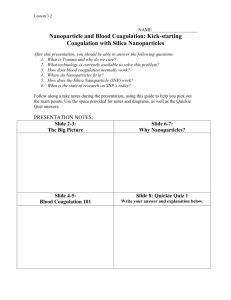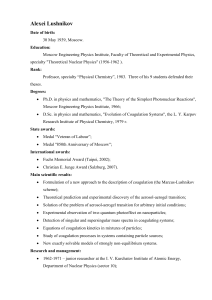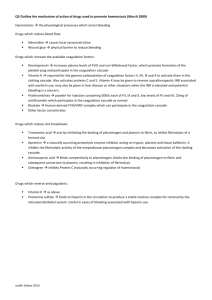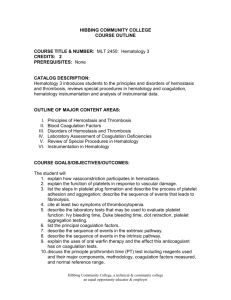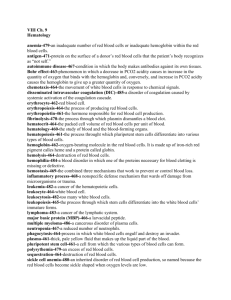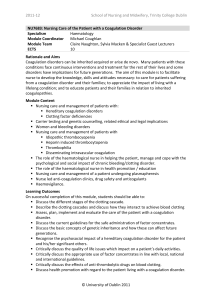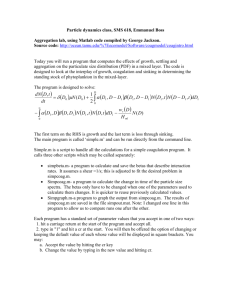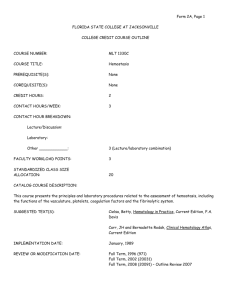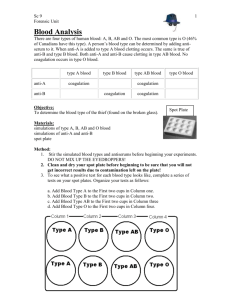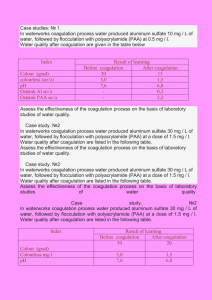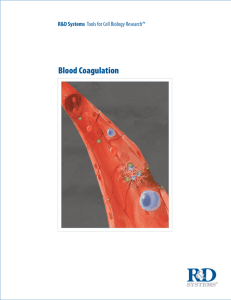Refined Classical Viewpoint on Coagulation of Charged Nanoparticles
advertisement
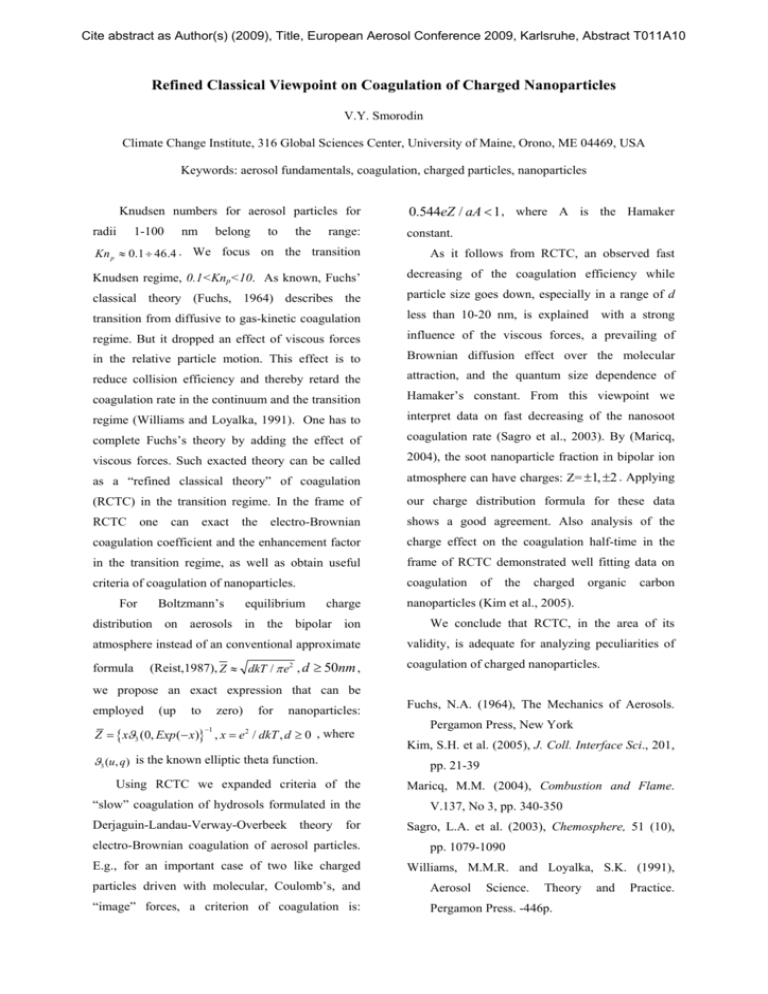
Cite abstract as Author(s) (2009), Title, European Aerosol Conference 2009, Karlsruhe, Abstract T011A10
Refined Classical Viewpoint on Coagulation of Charged Nanoparticles
V.Y. Smorodin
Climate Change Institute, 316 Global Sciences Center, University of Maine, Orono, ME 04469, USA
Keywords: aerosol fundamentals, coagulation, charged particles, nanoparticles
Knudsen numbers for aerosol particles for
radii
1-100
nm
belong
to
the
range:
0.544eZ / aA < 1 , where A is the Hamaker
constant.
Kn p ≈ 0.1 ÷ 46.4 . We focus on the transition
As it follows from RCTC, an observed fast
Knudsen regime, 0.1<Knp<10. As known, Fuchs’
decreasing of the coagulation efficiency while
classical theory (Fuchs, 1964) describes the
particle size goes down, especially in a range of d
transition from diffusive to gas-kinetic coagulation
less than 10-20 nm, is explained with a strong
regime. But it dropped an effect of viscous forces
influence of the viscous forces, a prevailing of
in the relative particle motion. This effect is to
Brownian diffusion effect over the molecular
reduce collision efficiency and thereby retard the
attraction, and the quantum size dependence of
coagulation rate in the continuum and the transition
Hamaker’s constant. From this viewpoint we
regime (Williams and Loyalka, 1991). One has to
interpret data on fast decreasing of the nanosoot
complete Fuchs’s theory by adding the effect of
coagulation rate (Sagro et al., 2003). By (Maricq,
viscous forces. Such exacted theory can be called
2004), the soot nanoparticle fraction in bipolar ion
as a “refined classical theory” of coagulation
atmosphere can have charges: Z= ±1, ±2 . Applying
(RCTC) in the transition regime. In the frame of
our charge distribution formula for these data
RCTC one can exact the electro-Brownian
shows a good agreement. Also analysis of the
coagulation coefficient and the enhancement factor
charge effect on the coagulation half-time in the
in the transition regime, as well as obtain useful
frame of RCTC demonstrated well fitting data on
criteria of coagulation of nanoparticles.
coagulation
For
Boltzmann’s
equilibrium
charge
of
the
charged
organic
carbon
nanoparticles (Kim et al., 2005).
distribution on aerosols in the bipolar ion
We conclude that RCTC, in the area of its
atmosphere instead of an conventional approximate
validity, is adequate for analyzing peculiarities of
formula
(Reist,1987), Z ≈ dkT / π e2 , d ≥ 50nm ,
coagulation of charged nanoparticles.
we propose an exact expression that can be
employed
(up
to
zero)
for
nanoparticles:
−1
Z = { xϑ3 (0, Exp (− x)} , x = e 2 / dkT , d ≥ 0 , where
ϑ3 (u , q) is the known elliptic theta function.
Using RCTC we expanded criteria of the
“slow” coagulation of hydrosols formulated in the
Derjaguin-Landau-Verway-Overbeek theory for
electro-Brownian coagulation of aerosol particles.
E.g., for an important case of two like charged
Fuchs, N.A. (1964), The Mechanics of Aerosols.
Pergamon Press, New York
Kim, S.H. et al. (2005), J. Coll. Interface Sci., 201,
pp. 21-39
Maricq, M.M. (2004), Combustion and Flame.
V.137, No 3, pp. 340-350
Sagro, L.A. et al. (2003), Chemosphere, 51 (10),
pp. 1079-1090
Williams, M.M.R. and Loyalka, S.K. (1991),
particles driven with molecular, Coulomb’s, and
Aerosol
“image” forces, a criterion of coagulation is:
Pergamon Press. -446p.
Science.
Theory
and
Practice.
